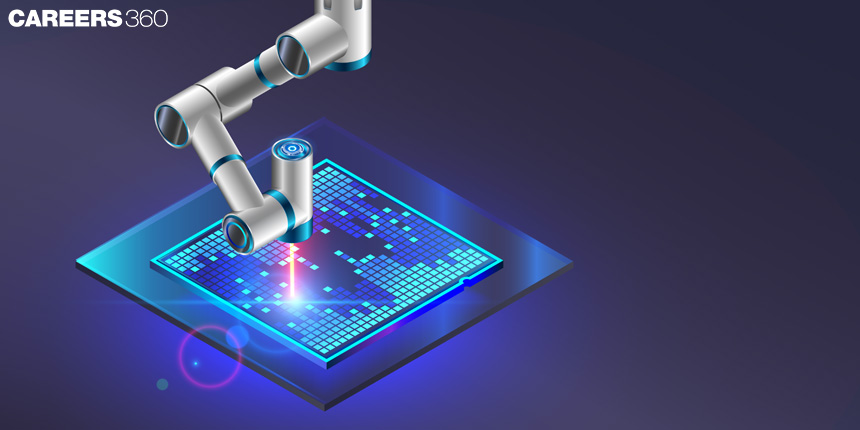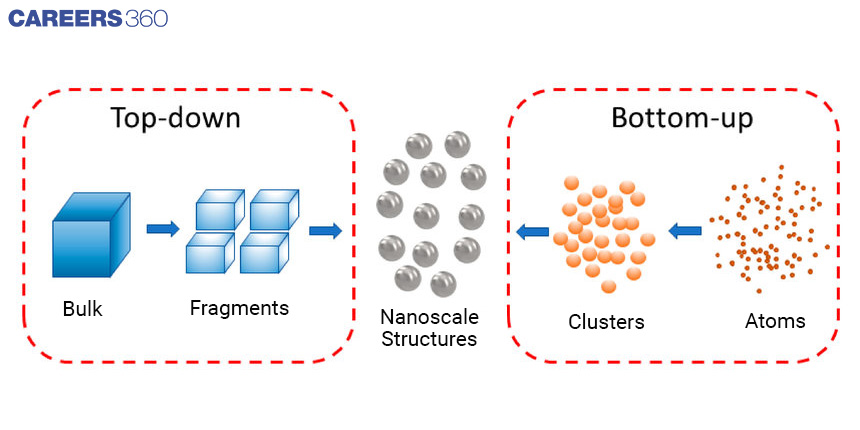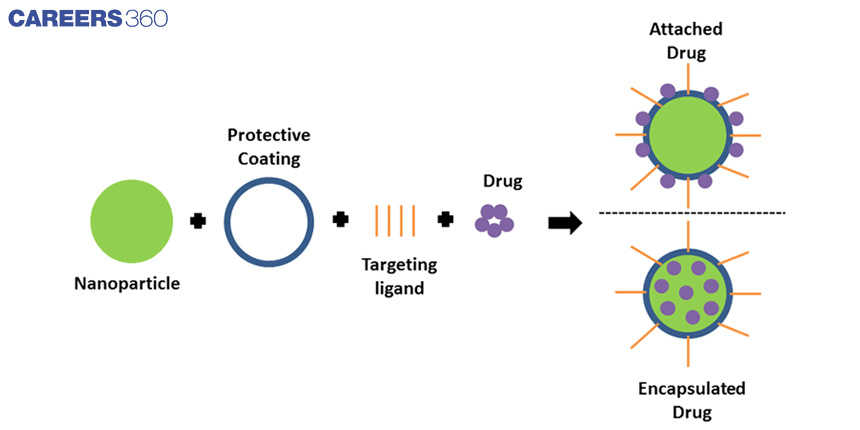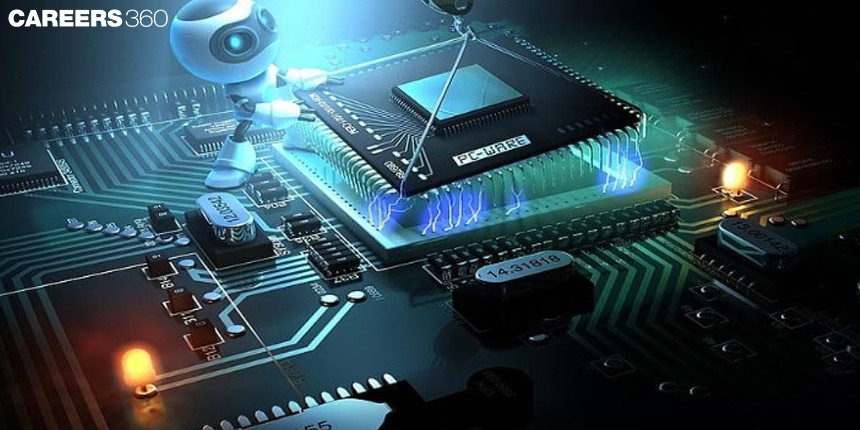What is Nanotechnology?
We know that everything on this Earth is made up of atoms - the clothes we wear, the food we eat, the buildings and houses we live in, and our human bodies, etc. Nanotechnology is the study and application of extremely small things at nanoscale, which is about 1 to 100 nanometers (One nanometer is a billionth of a meter) where unique phenomena enable novel applications. In nanotechnology we study particles at atomic level. It involves the ability to control individual atoms. At nanoscale matter can exhibit unusual properties (chemical, physical and biological properties) and involves new materials that have different properties and new effects compared to other sizes of the same material. This is due to the high surface to volume ratio of nanoparticles compared to larger particles. Nanotechnology involves measuring, modeling, imaging and manipulating matter at nanoscale. Here are some examples of nanoscale,

The thickness of a sheet of newspaper is about 100,000 nanometers.
A human hair is approximately 80,000 nanometers wide.
There are two types of nanotechnology according to how they proceed,
Bottom-up approach: In this approach we make larger nanostructures from smaller building blocks such as atoms and molecules. It is generally used for self-assembly; we do not use any external force.
Top-down approach: In this approach we make smaller nanostructures from larger building blocks such as silicon crystals. It has lesser precision accuracy (more control over the material dimensions) compared to bottom-up approach.

Application of Nanotechnology
Nanotechnology plays an important role in betterment of society and to make life easier. Its applications can be very beneficial and it has already been embraced by industrial sectors such as health and medicine, IT and electronics, food science, environment, agriculture, defense, textile, energy sector, etc. Some important uses of nanotechnology are given below.
Healthcare and Medicine
A variety of nanoparticles are used in hospitals by doctors and scientists in procedures to diagnose various medical conditions, disease prevention and treatment. It is already broadening the knowledge, therapies and medical tools currently available to clinicians. A few of the important applications of nanotechnology in medicine are:
Some silver nanoparticles are used in antimicrobial bandages. Some gold nanoparticles are also investigated as potential treatments for cancer and other diseases.
It is being studied for the diagnosis and treatment of the build-up of plaque in arteries (atherosclerosis). Scientists created a nanoparticle that mimics the body’s “good” cholesterol (HDL, high-density lipoprotein), which helps to shrink plaque.
It is used in hormone growth such as insulin hormone growth. It is also used in cloning such as Dolly (cloned sheep).
Some nanoparticles have also been used in cosmetics products such as sunscreen and scientists are also trying to find the way to vaccine delivery without using needles.
Targeted drug delivery system
We use nano biomarkers or vectors for targeted drug delivery such as dendrimers, carbon nanotubes, and micelles. It is mainly used for cancer therapy. It helps the drug to reach the tumor area with maximum efficacy because it inhibits drug delivery to healthy non-cancer cells and the direct conduct of drugs into the tumor site.

Environment And Agriculture (Food Science)
Nanotechnology is also used in agriculture and environmental protection. There are many nanoparticles which are used as nano biosensors to identify pathogens in the environment. These continuously evolving applications of nanotechnology in agriculture include:
Scientists have successfully developed an Air purification system with ions, nanofiltration systems for heavy metals or wastewater purification with nanobubbles. These are some of its environmentally-friendly applications.
Nano catalysts are also used in making chemical reactions more efficient and less polluting.
Scientists have developed a nanofabric "paper towel" with tiny wires of potassium manganese oxide that can absorb 20 times its weight in oil. It is used for cleaning purposes.
Nanotechnology is also used in food processing, to enhance nutritional value (Golden rice, Bt-brinjal, etc.), food packaging, and safety purposes. Nano biosensors are used to detect the presence of pathogens in food and nanocomposites used to improve food production. By using nanotechnology, we can obtain genetically modified crops with desired properties such as Bt-cotton, which is resistant to cotton bollworm.
IT and Electronics
Nanotechnology has greatly contributed to electronics and computing, leading to faster, smaller, and more portable transistors that can store and manage larger amounts of information. These are some examples of application of nanotechnology in electronic;
Graphene is lighter, stronger and more conductive compared to silicon, these properties make it an ideal material for the development of flexible, foldable, bendable, rollable, and stretchable touchscreens.
Scientists are using Carbon nanotubes (CNT) instead of silicon as a material for making faster, smaller and more efficient devices and microchips (IBM created the first seven nanometre transistor).
Apart from the above uses, nanotechnology is also used in flexible displays for e-book readers, flash memory chips for smartphones, antimicrobial coatings on keyboards and cell phone casings, ultra-responsive hearing aids, etc.

Energy and Textile
Nanotechnology is greatly enhancing alternative approaches to fulfill the world’s increasing energy demands. Many engineers and scientists are working to develop affordable, clean, and renewable energy sources, along with better efficiency.
Nanotechnology can be installed in solar panels to convert sunlight into electricity with higher efficiency. It is already being used to develop new kinds of batteries that have higher energy density, quicker-charging capacity, more efficient, lighter weight. Due to nanotechnology it is possible to develop smart fabrics such as wrinkle-free and odor-free across seasons, as well as lighter, stronger, and more durable materials to make various sports equipment. Along with this it is also used in developing antimicrobial fabrics for medicinal uses.
Apart from the applications discussed above, nanotechnology is used for various purposes in different sectors such as transportation. Game changing benefits of nanotechnology-enabled lightweight and high-strength materials would apply to any transportation vehicle. For example, it is used in developing aircraft to reduce the weight and fuel consumption.
According to this new technology enhanced world and the demand of the upcoming generation, everyone wants the smallest or nanotechnological solution to the biggest problem. Nanotechnological engineering provides revolutionary solutions in a variety of sectors such as healthcare, electronics, energy, textile, environment, agriculture, transportation, using efficient strategies and contraptions which are being made to make world class things. It ensures the ability to build correct machines and parts of nuclear size. All this is possible because of different behaviour of matter at nanoscale